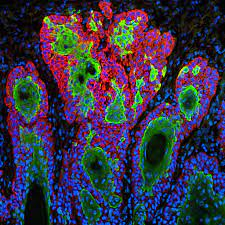This new flexible, transparent and "nomadic" biopatch improves cellular observation and drug delivery, by delivering the exact doses directly into the "targeted" cells. This new micro-needle device, by working so precisely, reduces pain and toxicity. The device developed by a team from Purdue University (Indiana) is documented in the journal Science Advances, is already finding a first application in the treatment of melanoma.

8 or 9 “nanoneedles” per cell: the team here uses silicon nano-needles (nanoneedles) with a diameter 100 times smaller than that of a mosquito's sting. These nano-needles are embedded in an extensible and translucent film deliver, at a rate of 8 or 9 per cell, extremely precise doses of biomolecules directly into the cells: "This means that 8 or 9 silicon nanoneedles are inserted into a single cell without significantly damaging the cell. So we can use these nanoneedles to deliver biomolecules into cells or even tissues with minimal invasiveness,” says lead author Chi Hwan Lee, professor of biomedical engineering at Purdue University.
Skin cancer is the patch's most obvious application , emphasize the researchers, who highlight the innovations, flexibility and transparency that allow real-time observation of the interaction between the patch and the cells.
The team wants to develop the functionality of the patch so that it acts as an external skin patch, can reduce pain and systemic toxicity associated with long-term drug administration.